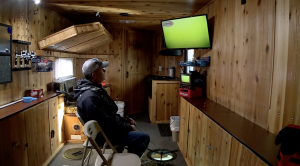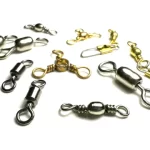As advanced fish-finding technology continues to evolve, Minnesota wildlife officials are facing growing concerns about its impact on fair play in ice fishing. The latest innovation drawing scrutiny is forward-facing sonar, a tool that gives anglers an unprecedented edge by allowing them to scan underwater areas in multiple directions over long distances.
Ice fishing guide Dan Jasper, who operates on Lake Minnetonka, demonstrates this cutting-edge technology in action. With 13 inches of ice on Phelps Bay, Jasper’s high-tech fishing setup includes underwater cameras and several sonar devices. However, it’s the forward-facing sonar that has stirred debate.
“The forward-facing sonar is controversial because it makes fishing feel like a video game,” Jasper explains.
Unlike traditional sonar, which only shows what’s directly beneath the boat or ice hole, forward-facing sonar provides a broader view, scanning hundreds of feet in multiple directions. This advantage comes with a hefty price tag—around $2,500—which raises questions about accessibility and fairness in the sport.

DNR Monitoring Potential Impact
The Minnesota Department of Natural Resources (DNR) has taken notice of the growing popularity of forward-facing sonar. In response, they have formed a special work group to evaluate its impact on fish populations and angler success rates. The group’s initial focus includes surveying anglers to determine how widespread the use of this technology is and how it affects catch rates compared to those using traditional methods.
Marc Bacigalupi, a representative of the DNR, acknowledges the complexity of regulating such technology.
“The challenge is figuring out how much is too much,” Bacigalupi says. “If it’s not causing population-level harm, we don’t want to jump the gun and impose restrictions prematurely. It’s a delicate balance.”
One species of particular concern is the muskellunge, or muskie, which exists in relatively low numbers and is already subject to strict angling regulations. Bacigalupi notes that if the widespread use of forward-facing sonar leads to increased muskie catches and mortality, the DNR would need to act swiftly.
“If we suddenly saw a significant increase in the catch and harvest of muskies, that would be a red flag for us,” he adds.
Tournaments and Technology
While the state has not yet imposed any restrictions on forward-facing sonar, fishing tournament organizers have the discretion to regulate its use. In a notable move, The National Professional Fishing League recently banned live forward-facing sonar during both official practice sessions and competitions.
For now, Minnesota officials are continuing to monitor the situation and gather data. Jasper believes it’s a matter of adapting to inevitable technological advancements.
“Technology is always changing, and we just have to keep an eye on it,” he says. “What’s considered normal in fishing today might have been unthinkable a decade ago.”
Looking Ahead
The ongoing debate over forward-facing sonar highlights a broader issue in modern angling—balancing innovation with the preservation of fish populations and the spirit of the sport. As technology continues to evolve, so too will the challenges faced by wildlife officials, anglers, and tournament organizers. For now, forward-facing sonar remains a powerful tool for those who can afford it, but its long-term impact on Minnesota’s ice fishing scene remains to be seen.
Image/Source: kare11





